Measuring the Gain Pattern of a Yagi-Uda Antenna with an RTL-SDR
We were most into amateur radio / sdr in 2015-ish. We’ve been getting back intrigued by it. The physical realm!
A couple months ago Ben bought a couple of Heltec Lora devices to use as meshtastic nodes https://heltec.org/project/wifi-lora-32-v3/ We had fun with that. There’s a decent network in Cambridge.
We also dug out our old Baofeng UV-5R radios. These a a common super entry level handheld ham radio. I think you need a license to transmit on at least some of the frequencies they have access to, but we do.
It turns out that the 2m band doesn’t reach between our houses, but the 70cm band does.
Ben thought it would be interesting to see if an antenna would help that.
He found plans to building a yagi uda antenna out of a measuring tape. It’s kind of a nice thing because you can get insanely cheap measuring tapes. It’s funny how reusing junk like that can be cheaper than getting some stock metal bar or something. It’s also perhaps nice that it is both flexible and rigid.
We used some wood as the centerbeam and got some sections of pvc to support the tape. We cut the pvc in half to set it on top of the wood and zip tied the measuring tape down on it. Zip ties are OP. We were consider more complicated ways of affixing, but this worked great.
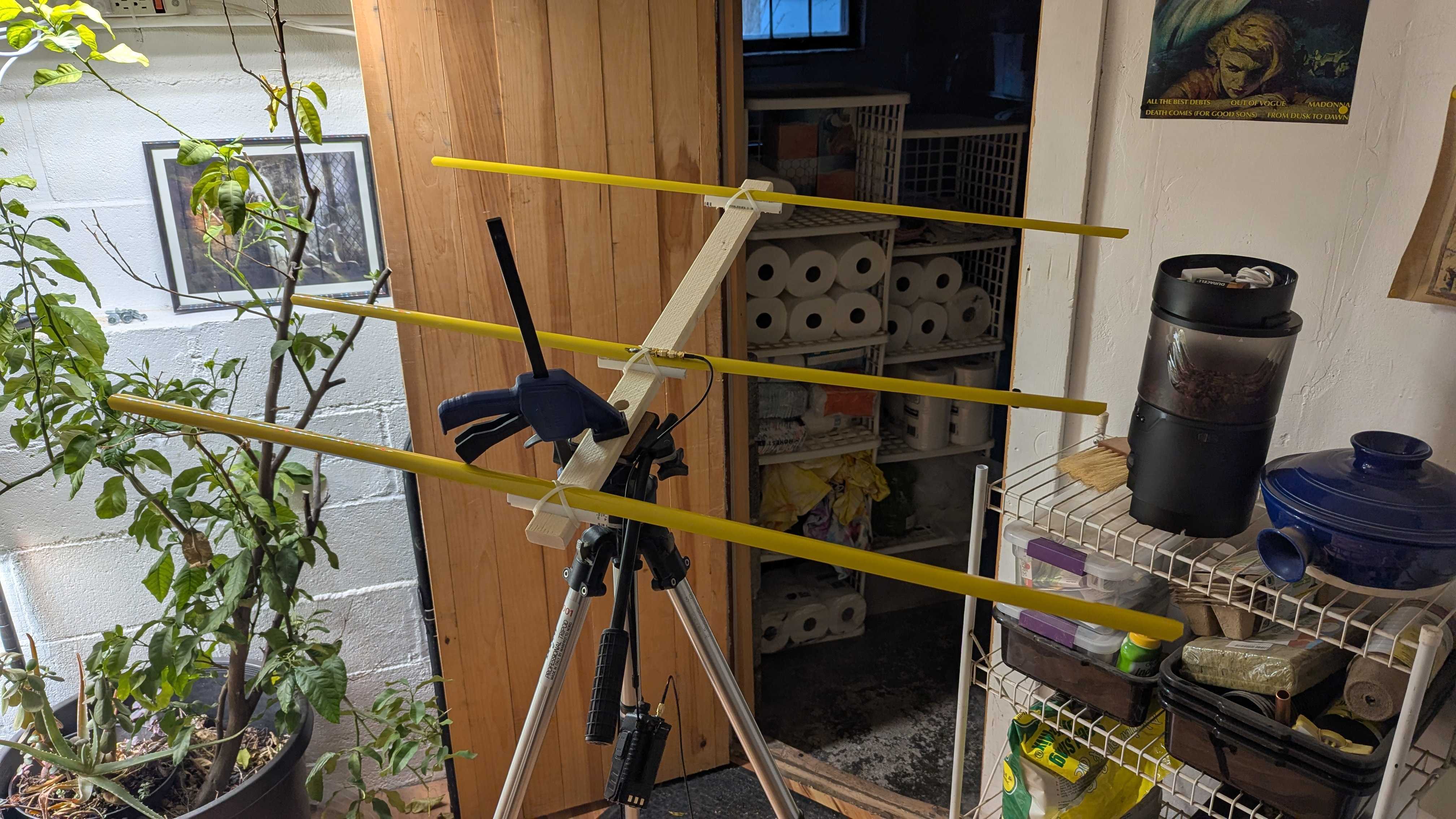
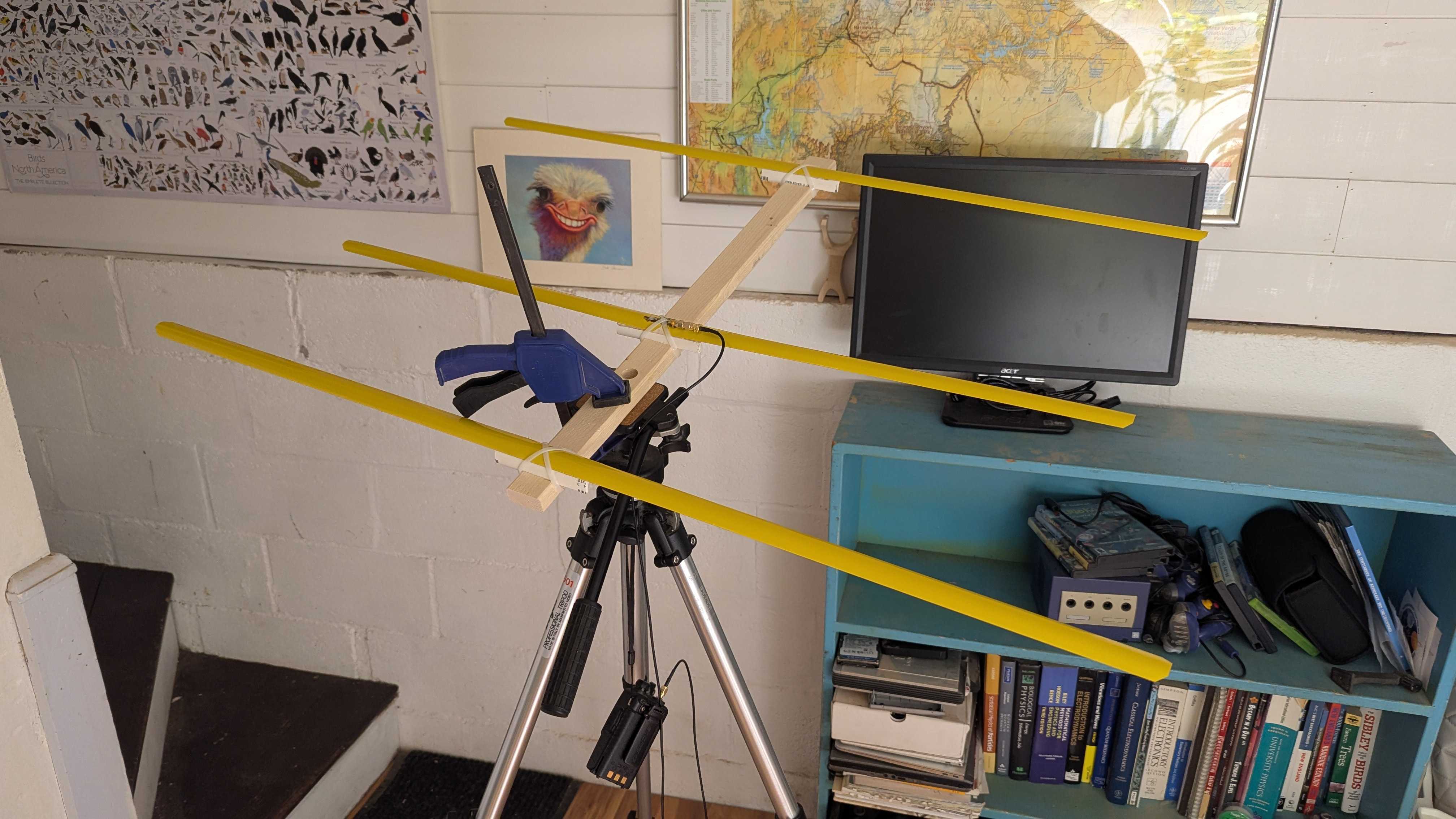
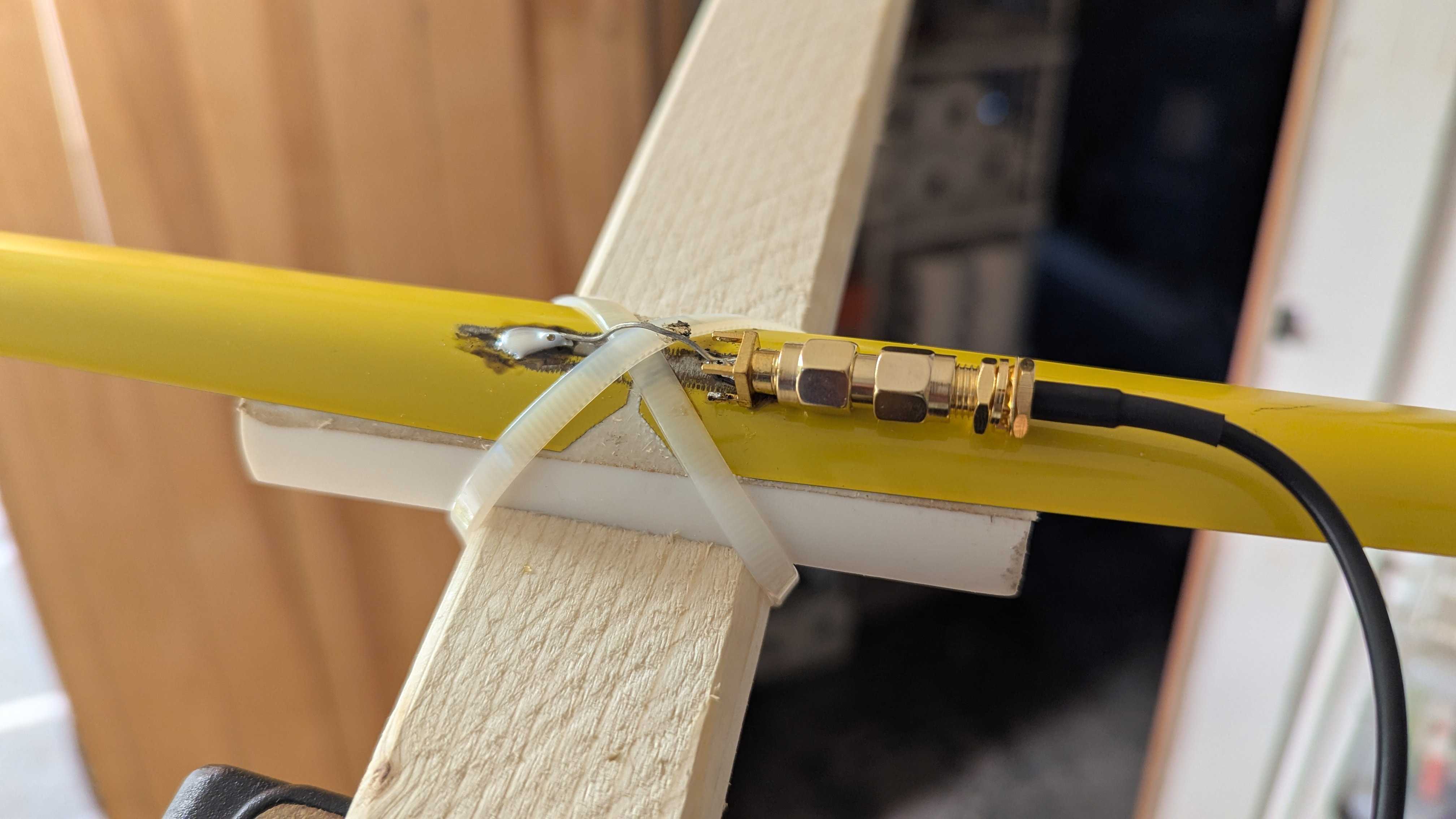
We strapped the things together the day before Sam was born. Maybe in a slight panic about the changes that may be about to come.
I had also bought a nanoVNA https://nanovna.com/ . It is nice to be an adult with money. I think one of my good qualities is buying dumb shit. The nanoVNA is cheap enough (by my current standards of cheap) and really cool. https://www.youtube.com/watch?v=tLMAStiaAxU&ab_channel=HamRadioCrashCourse We had a little learn about smith charts and musing again about impedance. There was a whole section of my EM course on smith charts in college. It is amusing and alarming what 10 years of dust on memory can do.
Initially we were measuring it just sitting on the table. The nearness to the ground or table seemed to effect its properties a lot. Once it was on a tripod the measurements seemed more stable.
We measured a standing wave ratio of 1.5 at our transmission frequency which we think is supposed to be good enough not to blow our radios.

I tried walking far away and seeing if the yagi could help us communicate farther. I got about 500 feet away. The stock rubber ducky and yagi seemed about the same. A mild disappointment. It might be that the directionality is not that relevant if we can’t keep line of sight.
This was not a particularly quantitative experiment. Instead, we busted out the rtl-sdr https://www.rtl-sdr.com/rtl-sdr-quick-start-guide/ . The plastic casing has gone completely rotten and it was very sticky. I bought a newer version that’s coming. Using gqrx we could look at the frequency. There is a little power meter at the top. We turned down the gain of the rtl (I think?) in order to not saturated when the yagi was pointed at it.
Ben went across the yard and used his cell phone compass to point the yagi on a tripod at 20 degree increments.
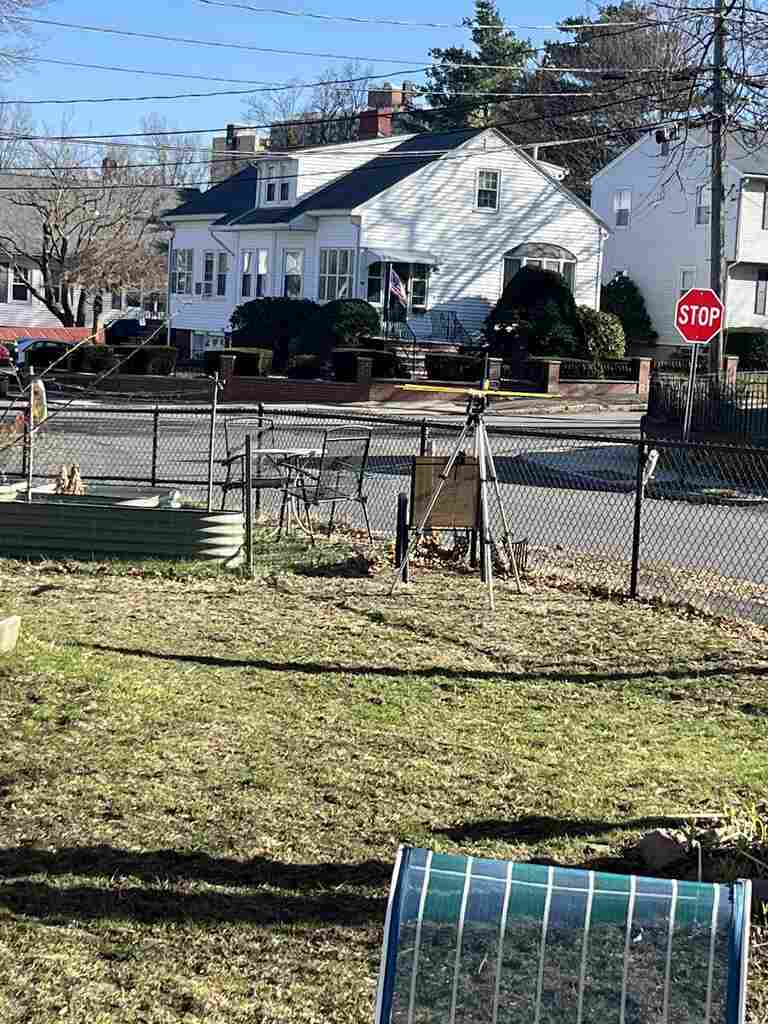
I read off the power reading from gqrx.
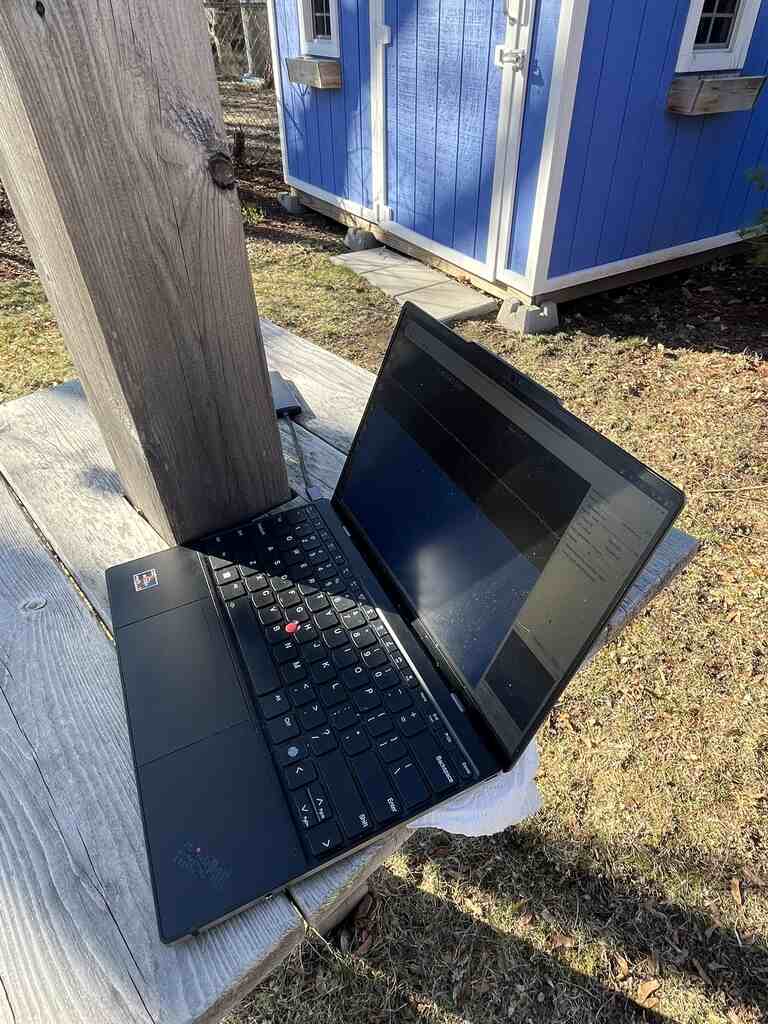
We gave a picture of our data to chatgpt and it was able to make this plot. Pretty insane.
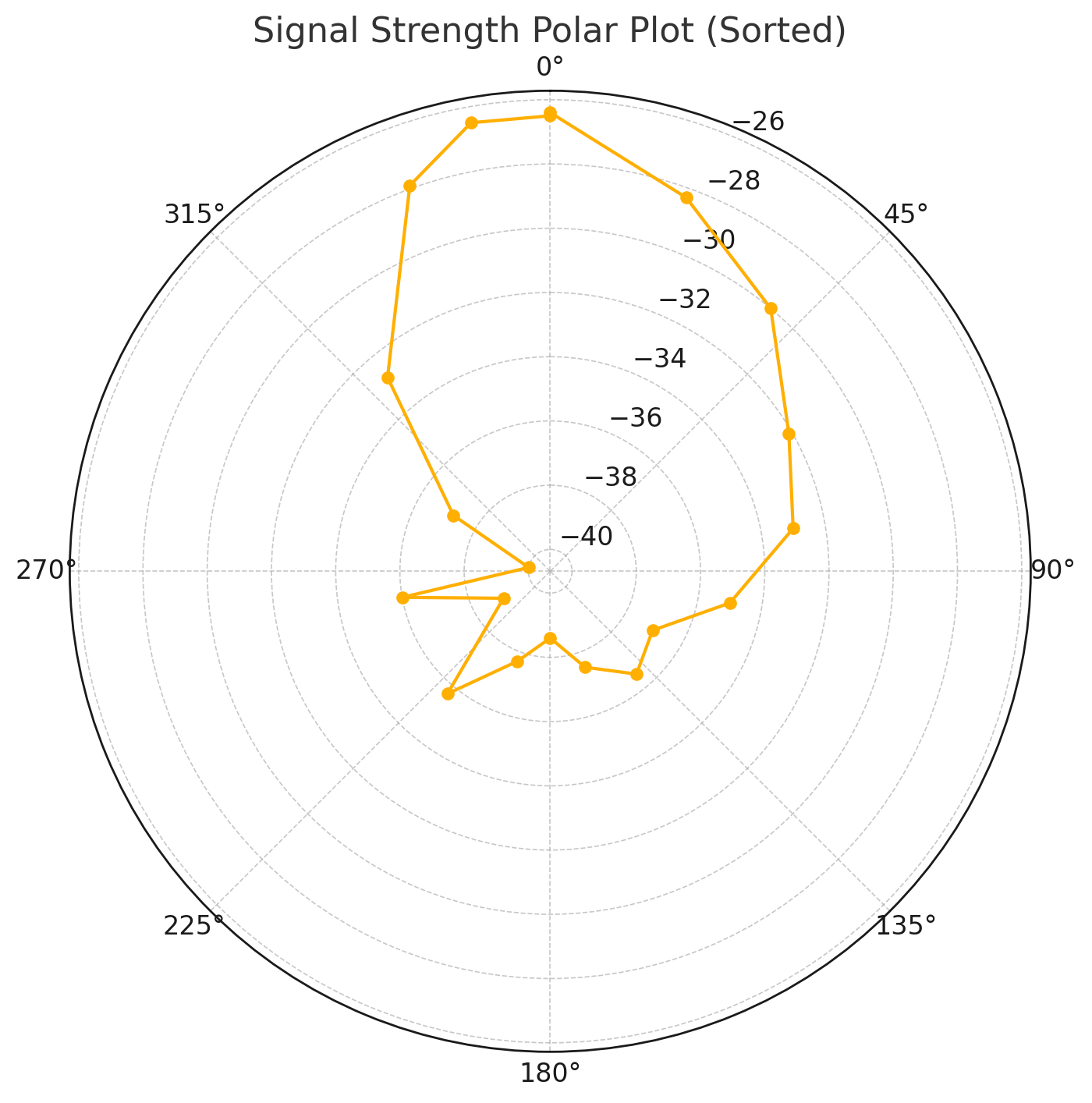
We could do a better job of course. We could make some python program to read off the data more automatically or some motor to move the antenna. It is useful and important to try the janky version first. YNGNI.
The baofeng is a useful cheap ok frequency source. That’s intriguing from a measurement perspective. Maybe we could do some physical radio experiments (diffraction, reflection, scanning) with it. Diffraction around concrete pillars? This +_ rtlsdr as detector seems like a great start for a physics lab.
Bits and Bobbles
https://blog.benwiener.com/radio/2025/03/02/yagi.html Ben’s post
https://en.wikipedia.org/wiki/Yagi%E2%80%93Uda_antenna
antenna simulation
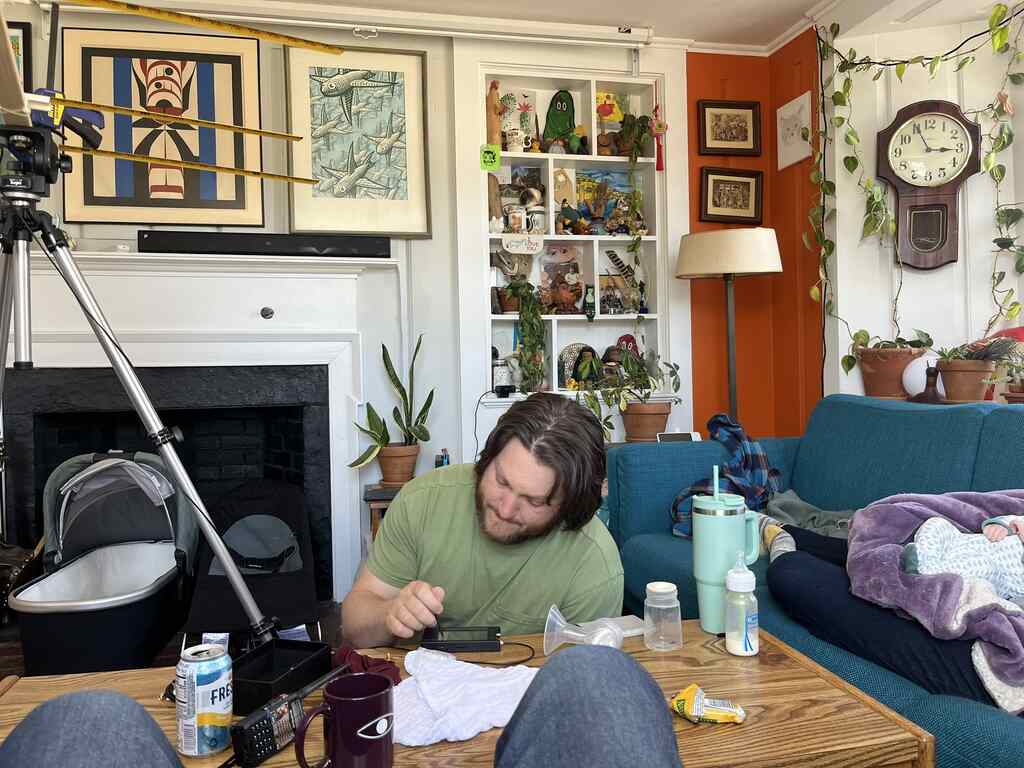
SWR https://en.wikipedia.org/wiki/Standing_wave_ratio standing wave ration
https://en.wikipedia.org/wiki/Slotted_line
https://en.wikipedia.org/wiki/Power_dividers_and_directional_couplers
https://www.youtube.com/watch?v=BijMGKbT0Wk&ab_channel=Rohde%26Schwarz Understanding VSWR and Return Loss
https://www.youtube.com/watch?v=_pJ8kh0i2u4&ab_channel=MicrowaveLabcast Lecture07: Impedance Matching with the Smith Chart
smith chart
balun- balunced to unbalanced https://en.wikipedia.org/wiki/Balun
https://en.wikipedia.org/wiki/Quarter-wave_impedance_transformer https://en.wikipedia.org/wiki/Dual_impedance 1/Z
nanoVNA https://nanovna.com/ https://www.youtube.com/watch?v=tLMAStiaAxU&ab_channel=HamRadioCrashCourse
transmission lines equations Z is boundary conditions reflection coefficients $\Gamma$
| Vmax = | Vf | + | Vr |
| Vmin = | Vf | - | Vr |
tinysa https://tinysa.org/ another fun looking toy
https://github.com/sdrangan/sdrlab
https://www.rtl-sdr.com/university-course-on-digital-signal-processing-with-the-rtl-sdr/ Yea, this is the lab I remember. Sending images through baofeng to rtlsdr https://sites.google.com/berkeley.edu/ee123-sp19/labs
gnuradio
URH https://github.com/jopohl/urh gnuradio luaradio
https://wiki.gnuradio.org/index.php/Tutorials
sudo apt-get install gnuradio
gnuradio-companion
https://pysdr.org/content/rtlsdr.html https://news.ycombinator.com/item?id=24750588
https://github.com/jtarrio/radioreceiver web based radio receiver. webusb
https://greenteapress.com/wp/think-dsp/
https://github.com/F5OEO/rpitx https://osmocom.org/projects/osmo-fl2k/wiki
https://www.rtl-sdr.com/hackaday-supercon-2024-microcontrollers-are-just-radios-in-disguise/ https://www.rtl-sdr.com/paper-on-building-a-low-cost-rtl-sdr-based-hydrogen-line-radio-telescope/
https://github.com/gqrx-sdr/gqrx https://github.com/miek/inspectrum
Audio from computer Multi microphone Synced?
FPGA.
retrodirective radio PLL swap - size weight and power
heterodyning LNA mixer filter amplifier antenna
https://news.ycombinator.com/item?id=43073808 https://hforsten.com/homemade-polarimetric-synthetic-aperture-radar-drone.html Homemade polarimetric synthetic aperture radar drone
https://ia800501.us.archive.org/30/items/AntennaTheoryAnalysisAndDesign3rdEd/Antenna%20Theory%20Analysis%20and%20Design%203rd%20ed.pdf ANTENNA THEORY ANALYSIS AND DESIGN